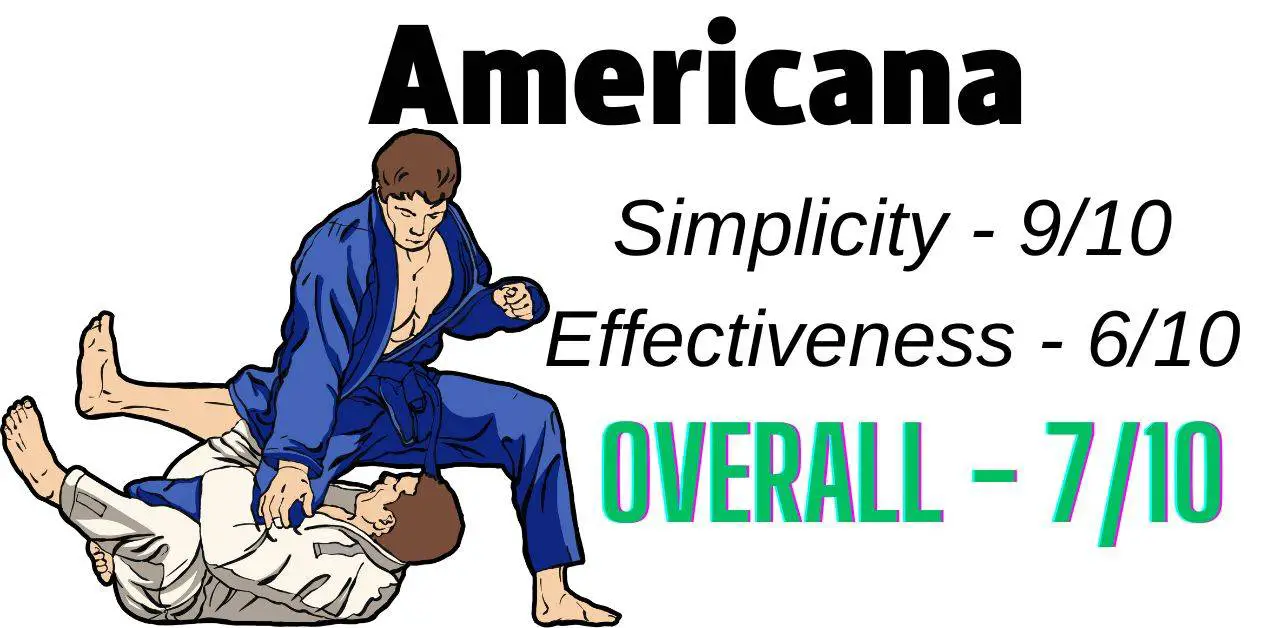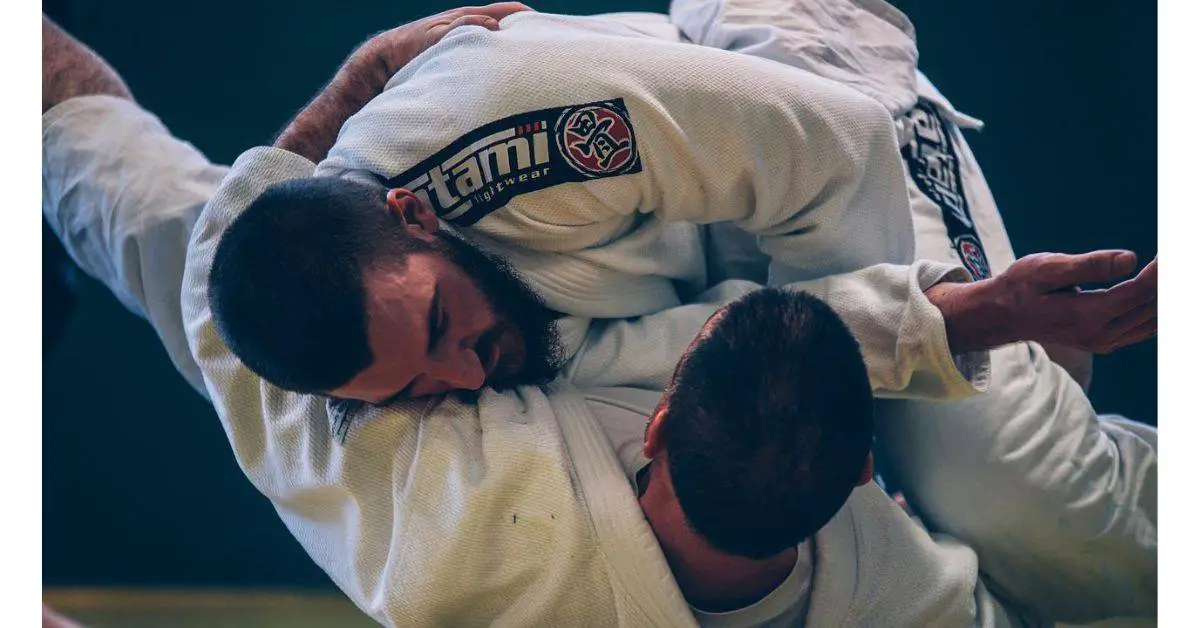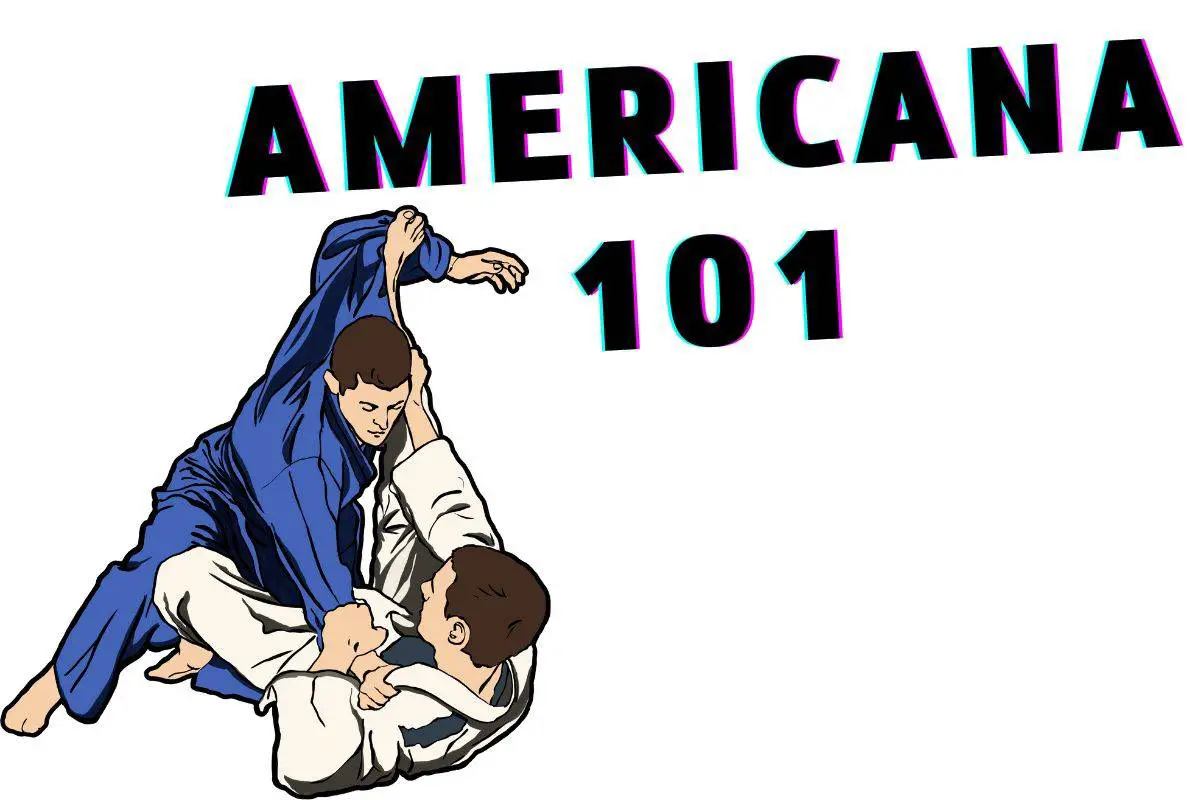The Americana is one of BJJ’s simplest and most effective submissions. There’s a big problem with it, on the other hand. Most grapplers learn it in their first months of training and then forget about it for the rest of their journey.
This happens because what most BJJ coaches teach is irrelevant in the advanced leagues. The only option then is to let it go.
Nevertheless, this shouldn’t happen. A few Americana variations will be both simple and highly effective, even in the more advanced leagues. Focusing on them, then—is much wiser.
The first part of the article will discuss such variation. Then, we’ll review other effective variations that you can use from various positions, such as the closed guard, mount, and in-side control. Learning all of them is critical for your long-term grappling progression.
Alright, you’re now ready to move to the first real part of this article. I encourage you not to miss a single step and read the entire thing if you want to perform it flawlessly.

How to perform the Americana (BJJ)
This section will break down the mounted Americana. Then, of course, we’ll review different variations (guard, mount, side control) to ensure you know how to perform this magnificent submission from all positions.
But, we’ll focus on the Americana from the mount position in this part of the article.
I chose to break down this variation because it’s a highly effective and creative variation. As a result, you’ll be an entirely different grappler before and after you learn it.
Your mind will open to new ideas and techniques you can execute after learning this variation.
Before we dive in, I want to remind you that each step is critical. You want to understand all of them before you go practice. Even a “start in the mount position” step will include important information inside. If you will perform the mounted Americana flawlessly and win more BJJ fights using it, don’t skip any step!
So, without further introduction, let’s dive into the first step of the mounted Americana.
Step #1 – Start in the mount position
While this first step is obvious, you want to make sure you do a few things:
First, you must perfect your posture. You want to be balanced to ensure the opponent doesn’t knock you off-balance and gets on the offensive.
The last thing you want is to go for the mounted Americana and end up tapping out because you weren’t as focused on the small details. Thus, you want your posture to be straight and balanced.
Another essential detail is to pinch your knees inward when you’re in mount. You don’t want to do to squeeze as hard as possible, but make sure to apply inward pressure using your knees. That’ll allow you to control the opponent’s position using only your legs.
However, applying too much pressure will tire your legs quickly. And we want to avoid that.
I recommend watching the following video if you’re having difficulty controlling the mount once you’re there.
Step #2 – Grab the opponent’s wrist
The second step is to grab the opponent’s wrist. Spoiler alert, the next few steps will focus on driving the opponent’s hand backward. So, you want to have a firm grip to ensure you can do that in the future.
You want to connect your elbow to your body. This will give you much more control over the opponent’s arm. In addition, he won’t be able to evade your Americana if you connect your elbow to your body. This is a critical thing to understand.
You want to maintain as much control over the opponent as you can. And this detail will help you do that. Eventually, it’ll also help you win fights using this variation more often.
Step #3 – Lean forward
The 3rd step is to lean forward. There’s a single mistake many novice grapplers get wrong. You don’t want to use your strength to lean. Instead, you want to follow one guideline.
The primary guideline is to let your entire body attack the arm. This will create more pressure on the arm, making it more difficult to escape.
Indeed, you want to ensure your entire body leans forward. Next, you’ll apply all the pressure you gathered in this step to perform the next one.
Let’s see what it is.
Step #4 – Place your elbow beside the opponent’s ear
The 4th step is to place your elbow beside the opponent’s ear. If you guys have seen the Americana at some point in your life, this is the cornerstone step you must follow to perform it appropriately.
With all your weight, you want to lean forward and drive the opponent’s arm down. However, if you use your strength, your opponent will likely counter you with some of his strength, specifically if he’s stronger than you.
That’s why you must put your body into it. You’re in the mount; it’ll be best not to forget that. You’re on top, so you have the advantage. If you only use your arm strength, you’ll be less likely to achieve this step and move to the next one.
Thus, you want to lock your arms and drive the opponent’s arm with your body. Then, you want to place your elbow near the opponent’s ear.
Step #5 – Insert your hand underneath his arm
The 5th step, also a critical one—is to insert your hand underneath his arm. The next step will be to lock your hands together, so make sure you’re doing steps #5 and #6 without stopping in the middle.
You want to continue with the motion; let it flow. Once you place your elbow beside the opponent’s ear, you want to move your other arm beneath his arm immediately.
So, you’re ready for step 6, which is almost the final one!
Step #6 – Grip your wrist with the same arm
This step will focus on gripping your first wrist with the hand that went beneath the opponent’s arm (step #5.) Again, you want to make sure the grip is as firm as possible, so the opponent won’t be able to escape.
If you skip this step, the Americana won’t work. Thus, you want to emphasize performing this step, whether you’re a novice or an advanced grappler.
Step #7 – Apply pressure (up or to the side)
Alright, so for the final step of the Americana, you want to apply pressure by twisting your body and moving your arms.
The pressure should be either upward or to the side. If you try and apply pressure in another direction, it won’t provide enough pressure to finish this submission.
The best piece of advice I can give you in this section is to experiment. Don’t hesitate to start practicing this variation when you find a partner willing to help you. Experiment with it. See which side the pressure you apply causes the fastest tap out. Then, you can choose a favorite and stick with it.
Actually, I lied. That’s not the final step of the mounted Americana. Instead, the next one is.
Step #8 – Wait for the tap
I always include waiting for the tap as the last step in my breakdowns. I want you, fellas, to understand how important paying attention to the opponent is.
You want to avoid hurting your training partner by not listening. For example, you have executed the Americana flawlessly, and the opponent taps out. What good is it if you don’t let go of his arm pressure and you end up hurting him?
BJJ is all about learning and bettering yourself in the process. So alright, you know how to perform this somewhat complex submission. However, it won’t be worth learning if you hurt your training partner in the process.
Make sure to pay attention to your BJJ partner when you apply real pressure. Once you feel the tap out, release all pressure at once. Please don’t play with it.
On a more optimistic note, if you want to learn about yet another effective BJJ submission, follow the link to learn about the Loop choke and how to perform it perfectly.
Variations of the Americana
This part of the article will cover the 4-variations of the Americana that you should learn. It’ll be best to understand them all, even if you’re only going to implement the mounted one we’ve broken down in this article.
I’m a fan of learning everything so you can eventually broaden your knowledge in this area. So, without further ado, let’s dive in.
Variation #1 – Americana from Side Control
The first variation we’ll discuss is the Americana from the side control position. While it’s highly effective, many advanced grapplers know how to defend against it. So, unless you have perfected this submission, I recommend sticking with other submissions for now, especially if you’re up against a more advanced grappler.
Nonetheless, here’s how it goes:
- Start in the side control position
- Pin the opponent’s arm down
- Insert your hand underneath his arm
- Grab your wrist
- Apply downward and side pressure
- Wait for the tap
This variation is also uncomplicated. That’s why I encourage you to learn it first. It can also be effective against many novice grapplers.
Effectiveness-wise, this and the Mounted Americana are the most effective ones. As a result, I recommend learning both!
Variation #2 – Americana from Closed Guard
This is a more creative variation of the Americana. I was surprised to see how simple it is, as I have never learned this submission from the closed guard position.
Now, please pay attention to the steps, as they can be pretty daunting. And then, watch the video to ensure you completely understand this variation. So, alright, let’s dive in.
- Start from the closed guard position
- Push the opponent down
- Put one of your legs on top of the opponent’s shoulder
- Grab his wrist
- Twist your hips while turning his wrist in the other direction
- Wait for the tap
Variation #3 – Mounted Americana
We’ve already broken down this variation. So, I’ll keep it short and simple.
This variation is perhaps the most effective one. It can be broken down into 3 primary steps:
- Push the opponent’s arm down
- Grab your wrist while inserting your hand underneath his arm
- Apply side or up pressure
Eventually, this is what it comes down to. If you can master these 3 steps, you’ll be more than likely to submit your opponent using it.
I encourage you to read my breakdown in this article (the 1st part) if you want to grasp this variation better.
What is an Americana called in Judo?
In Judo, the Americana is called Ude Garami. This is because Judo includes many submissions, such as this one. While it originates from BJJ, other martial arts, such as Judo, also use it. The Ude Garami utilizes bending the opponent’s arm at a 90-degree angle and thus force him to tap out.

Is the Americana submission effective?
The Americana is one of BJJ’s most effective submissions. It utilizes shoulder and arm pressure to force the opponent to tap out quickly. You really don’t need strength to perform it effectively. However, most advanced grapplers know how to defend against it, as its defensive moves are widely spread.
Should I learn the Americana?
All BJJ trainees should learn the Americana because it’s one of the simplest and yet most effective submissions you’ll encounter. You can divide it into 3-primary steps, which is low compared to other submissions, such as the Guillotine and the Triangle choke.
If you want to learn about yet another effective BJJ submission, follow the link to learn about the Baseball choke and how to perform it perfectly.
When should I use the Americana (BJJ)
You can and should use the Americana when you’re in mount or in side control, as these are the most effective positions to perform it from. However, while you can perform it when you’re in the guard position, it’s less effective than its peers.
Make sure to read my breakdown of the mounted Americana once again if you want to learn how to surprise your opponent and be less expected when performing it. That will help you finish BJJ fights more often using it!
Final words
This is it; we’ve reached this guide end. Hopefully, you’ve been able to learn a few things about this magnificent grappling technique.
In my eyes, learning it is more attractive because of its simplicity. You want to learn it in your first few Jiu-Jitsu classes, as it’ll allow you to get your first wins and increase your confidence.
I know stepping out of your comfort zone and learning a new submission can be difficult. However, this is what Blinklift is about. It’s about acting and getting yourself together to better yourself in the future. So, this is it.
Nonetheless, the Americana isn’t close to being the most effective BJJ submission. If you want to know which BJJ submissions are most effective, follow the link!
Here are a few related articles you’ll enjoy reading:

